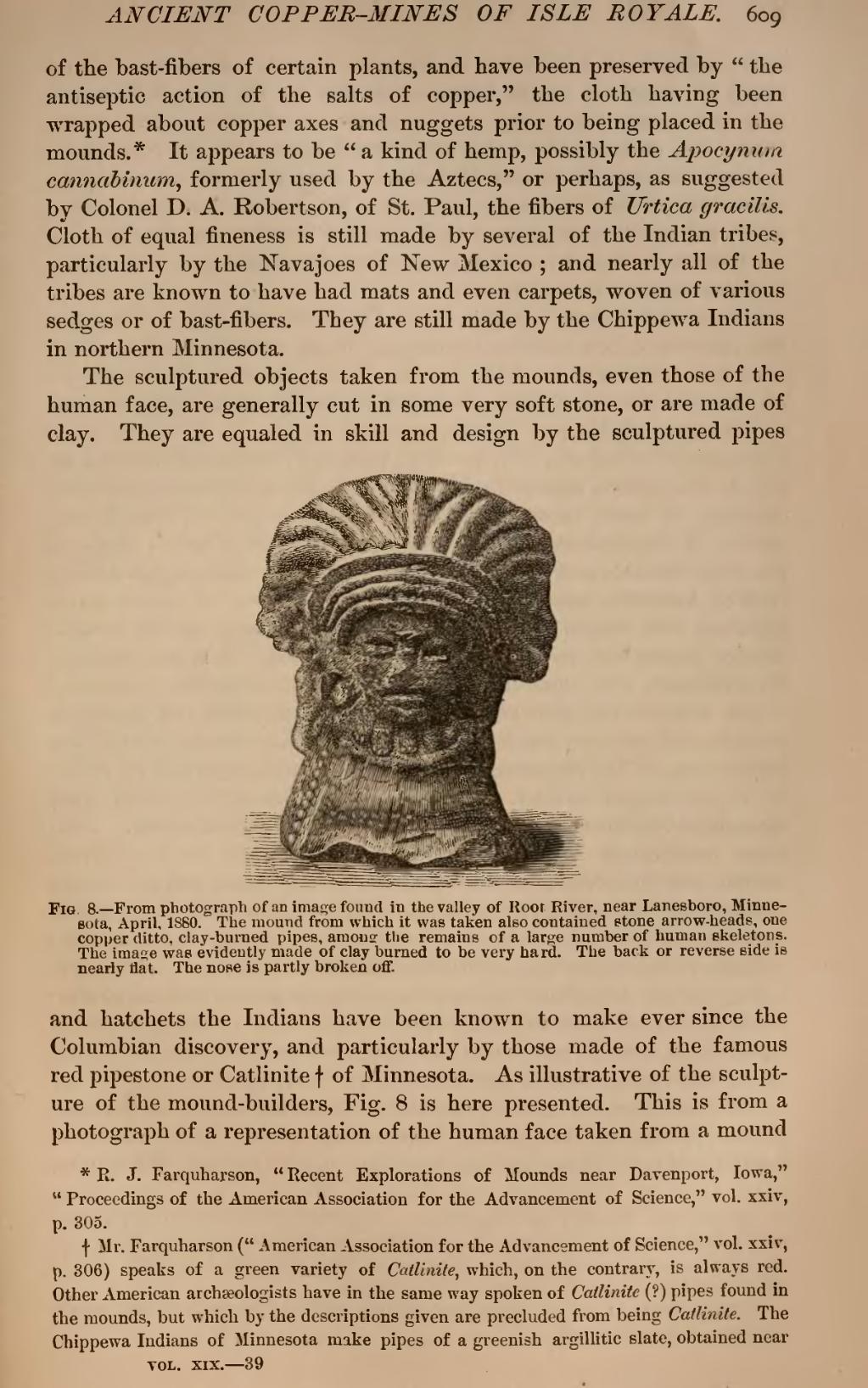of the bast-fibers of certain plants, and have been preserved by "the antiseptic action of the salts of copper," the cloth having been wrapped about copper axes and nuggets prior to being placed in the mounds.[1] It appears to be "a kind of hemp, possibly the Apocynum cannabinum formerly used by the Aztecs," or perhaps, as suggested by Colonel D. A. Robertson, of St. Paul, the fibers of Urtica gracilis. Cloth of equal fineness is still made by several of the Indian tribes, particularly by the Navajoes of New Mexico; and nearly all of the tribes are known to have had mats and even carpets, woven of various sedges or of bast-fibers. They are still made by the Chippewa Indians in northern Minnesota.
The sculptured objects taken from the mounds, even those of the human face, are generally cut in some very soft stone, or are made of clay. They are equaled in skill and design by the sculptured pipes

and hatchets the Indians have been known to make ever since the Columbian discovery, and particularly by those made of the famous red pipestone or Catlinite[2] of Minnesota. As illustrative of the sculpture of the mound-builders. Fig. 8 is here presented. This is from a photograph of a representation of the human face taken from a mound
- ↑ R. J. Farquharson, "Recent Explorations of Mounds near Davenport, Iowa," "Proceedings of the American Association for the Advancement of Science," vol. xxiv, p. 305.
- ↑ Mr. Farquharson ("American Association for the Advancement of Science," vol. xxiv, p. 306) speaks of a green variety of Catlinite, which, on the contrary, is always red. Other American archæologists have in the same way spoken of Catlinite (?) pipes found in the mounds, but which by the descriptions given are precluded from being Catlinite. The Chippewa Indians of Minnesota make pipes of a greenish argillitic slate, obtained near

